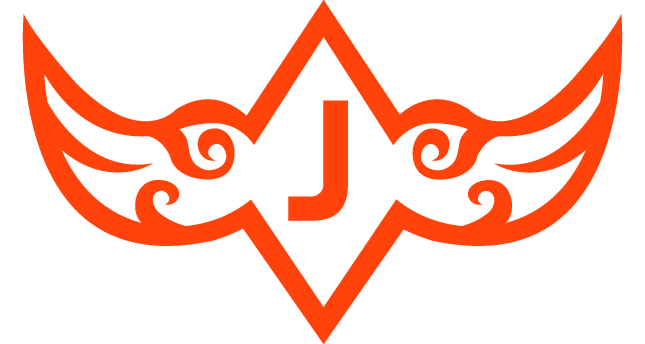Microsoft
Vowpal Wabbit
Large Desktop site, Standard Desktop site, Mobile site
Company
Overview
Vowpal Wabbit is Microsoft’s open source Machine Learning Platform for the Software Development and Research Community. VW is the world’s most innovative and powerful tool for Online Learning, and focuses on solving real-world problems related to online prediction and search engine accuracy.
UX Team
Justin de los Angeles – Product Designer 2
Vanessa Milan – UX Lead/Creative Director
Rafah Hosn – Product Manager
John Langford – Lead Researcher/Product Manager
Development Team
Rodrigo Kumpera – Software Development Engineer Lead
Cheng Tan – Frontend Development Lead
Jack Gerrits – Frontend Development Lead
Pavithra Srinath – Software Development Engineer
Jacob Alber – Software Development Engineer
Marco Rossi – Senior Data Scientist
Role
Product Designer 2
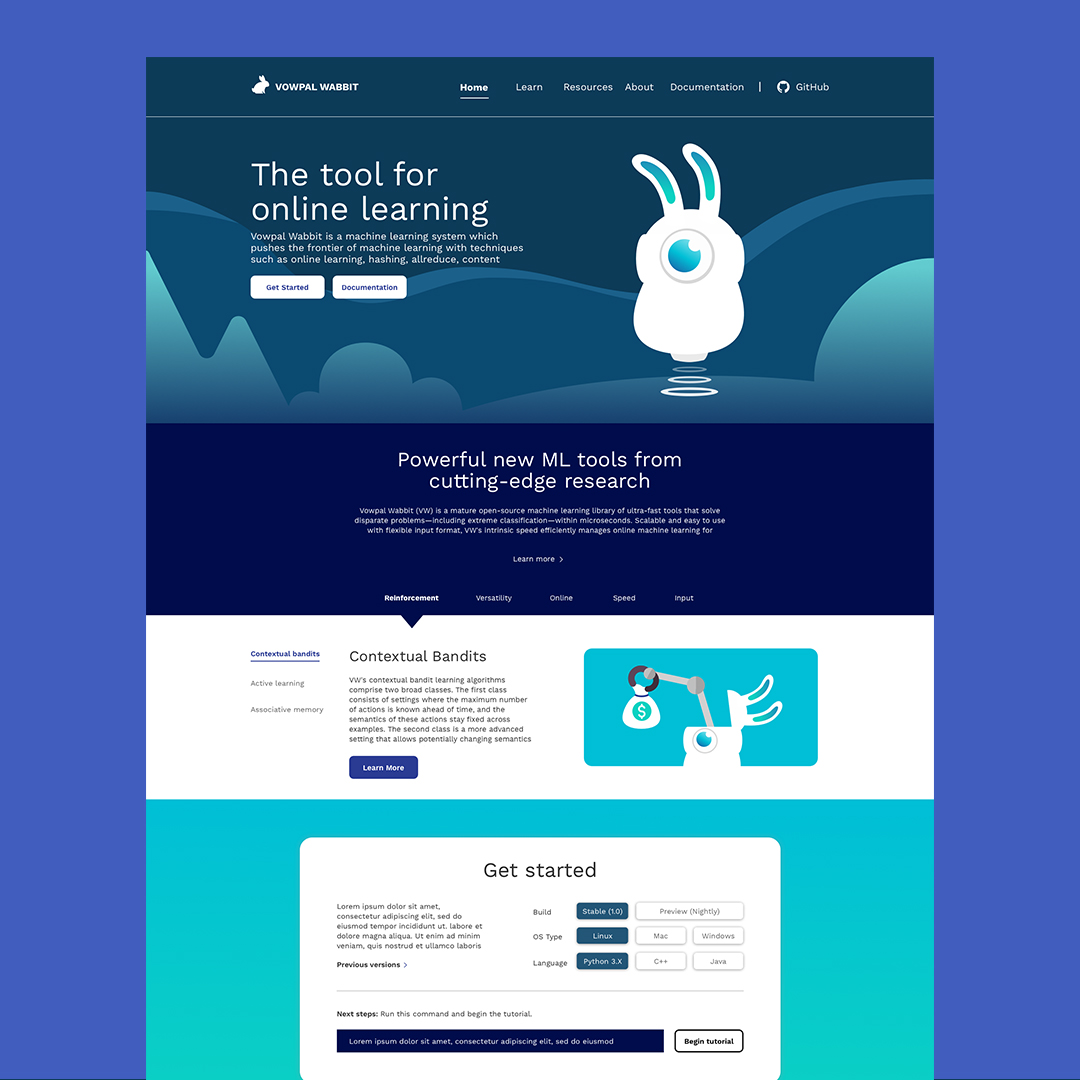
Initial Problem
Microsoft needed the team to create and design a website, that would allow VW to operate as a full-fledged product, rather than being just an extension from GitHub. After having an initial meeting with the main stakeholder, we determined that our problems were:
- Differentiators are not clear or obvious (Why VW?)
- Platform is not intuitive and difficult to use
- Friction throughout experience, from getting started to product integration
- Content is complex and perceptually disorganized
- Brand & messaging is unclear: voice, tone, identity
- Incentives for adoption and platform contributions are unclear
- Small market presence, low community engagement and adoption rate
Goal
- An open, reliable, and trustworthy system that encourages new perspectives to how and which problems are solved. Contributions and community support are recognized and amplified.
- All the right tools and educational resources are provided so that users understand what VW is, it’s key differentiators, how it works, known use cases, how to get started quickly, and what to do when things go wrong
- The system is intuitive, simple and easy-to-use, making getting started to product integration a seamless experience.
UX Process and Methods


Initial Research Phase
In order to uncover the main issues, we conducted more than 10 interviews with our target users, Software Engineers, Data Scientists, and Researchers. After the interviews were completed, we categorized the content with an affinity map, and formed top 10 insights based on those categories.
Top 10 Insights
1. Need to be able to see a demo showing the magic of VW with no friction/Installation needs to feel simple, and not have compatibility issues.
2. VW is too monolithic.
3. Handling contextual bandits are what can allow VW to excel over the competition.
4. The documentation should be as robust and as in-depth as Sci-kit.
5. VW has a difficult input format.
6. Online Learning is a huge advantage that VW has over anyone else.
7. Inconsistent Community
8. I want to get some kind of recognition for my contributions.
9. Use Cases
10. I want to see what the community thinks of VW and what the community has done with VW.
Insight Quotes
Below are some of the user quotes, that we based our insights on.
Personas
Based on the research insights, we created 3 personas, representing software engineers, data scientists, and researchers.

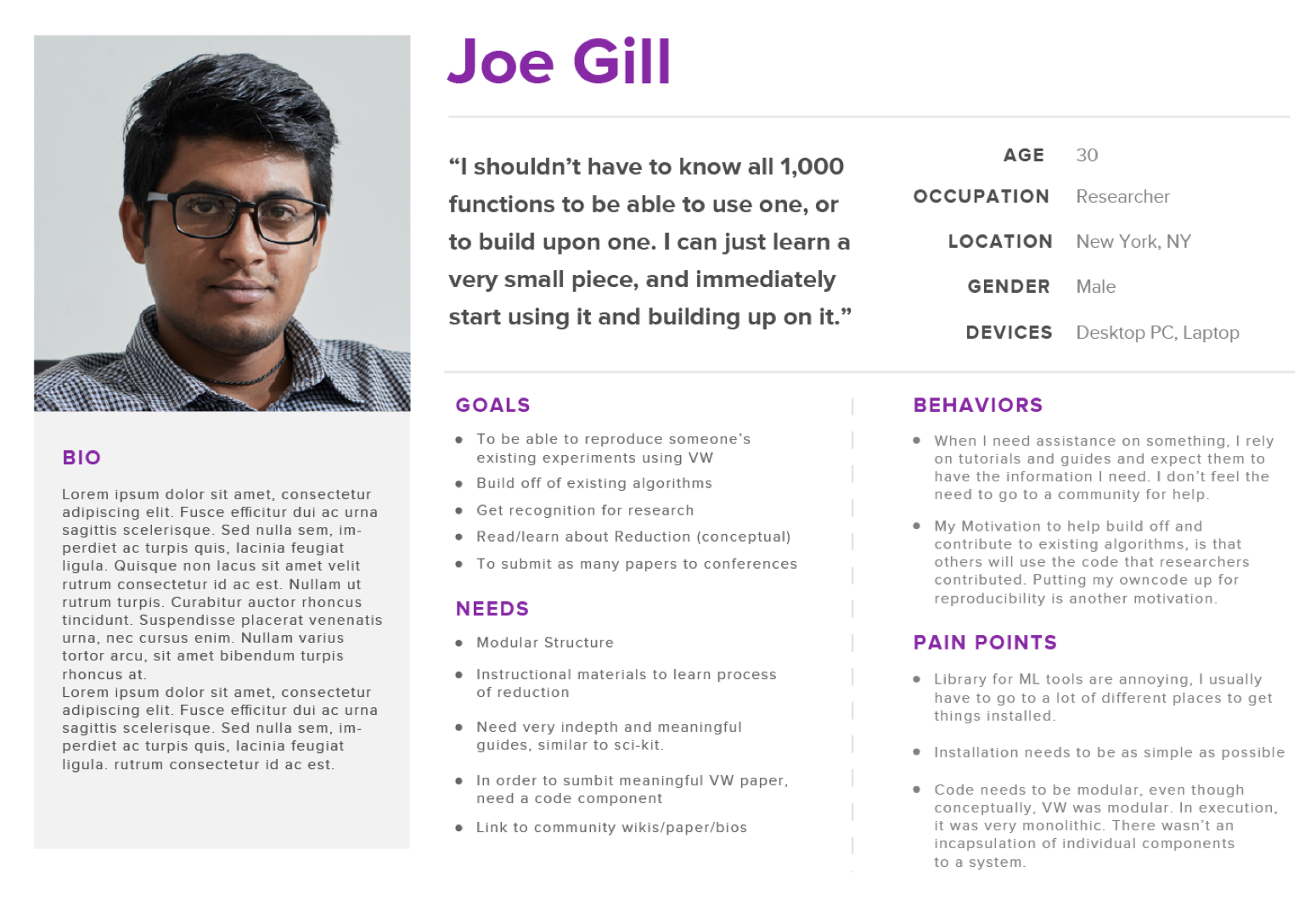
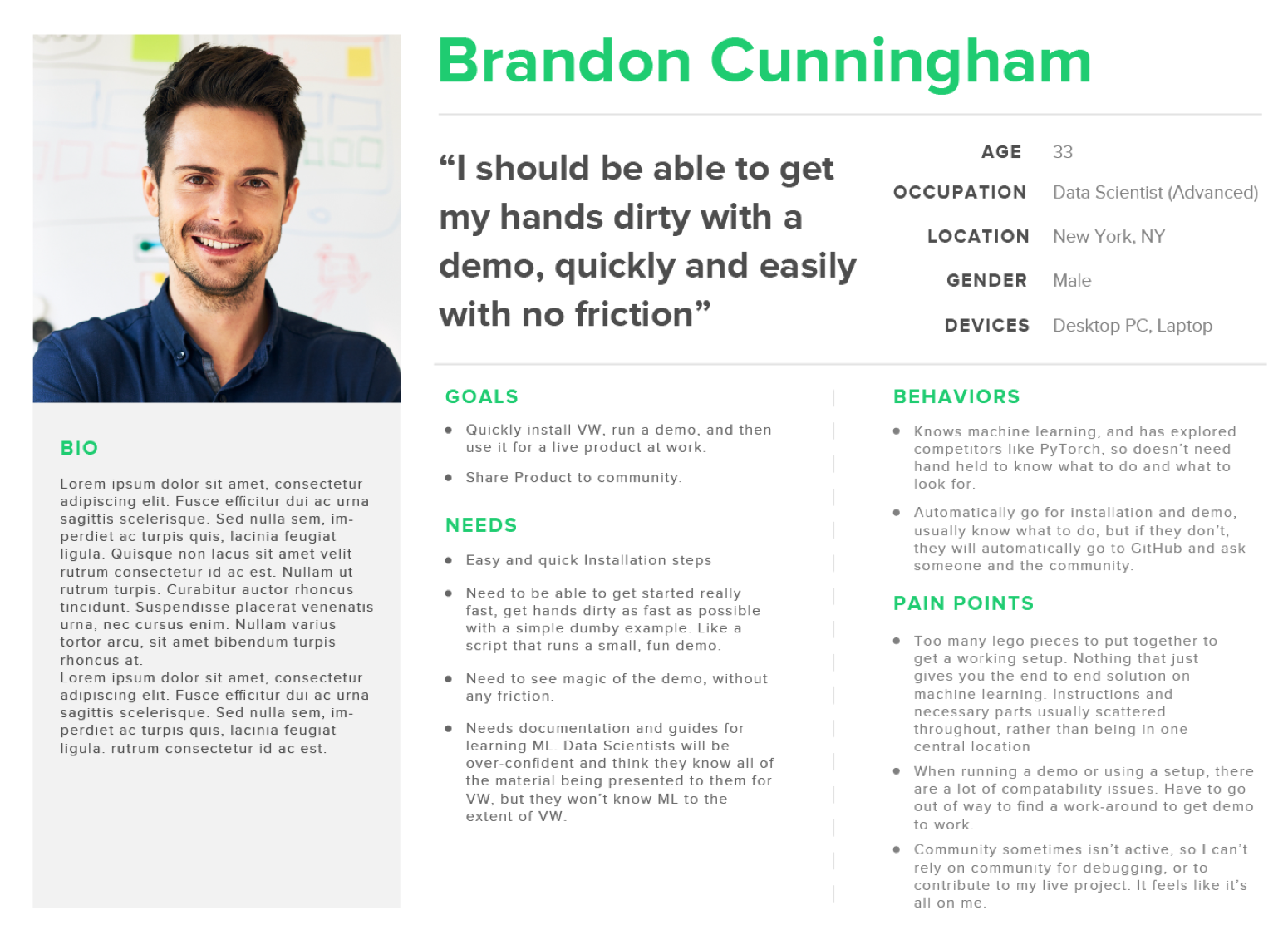
Competitive / Comparative Research
We held a competitive and comparative analysis with competitors such as PyTorch, Tensor Flow, and Droid.io, in order to uncover what base features needed to be created for VW.

Site Map
After the research phase was completed, we created a site map, that included a home page, demo page, documentation page, resource page, about page, and community page.
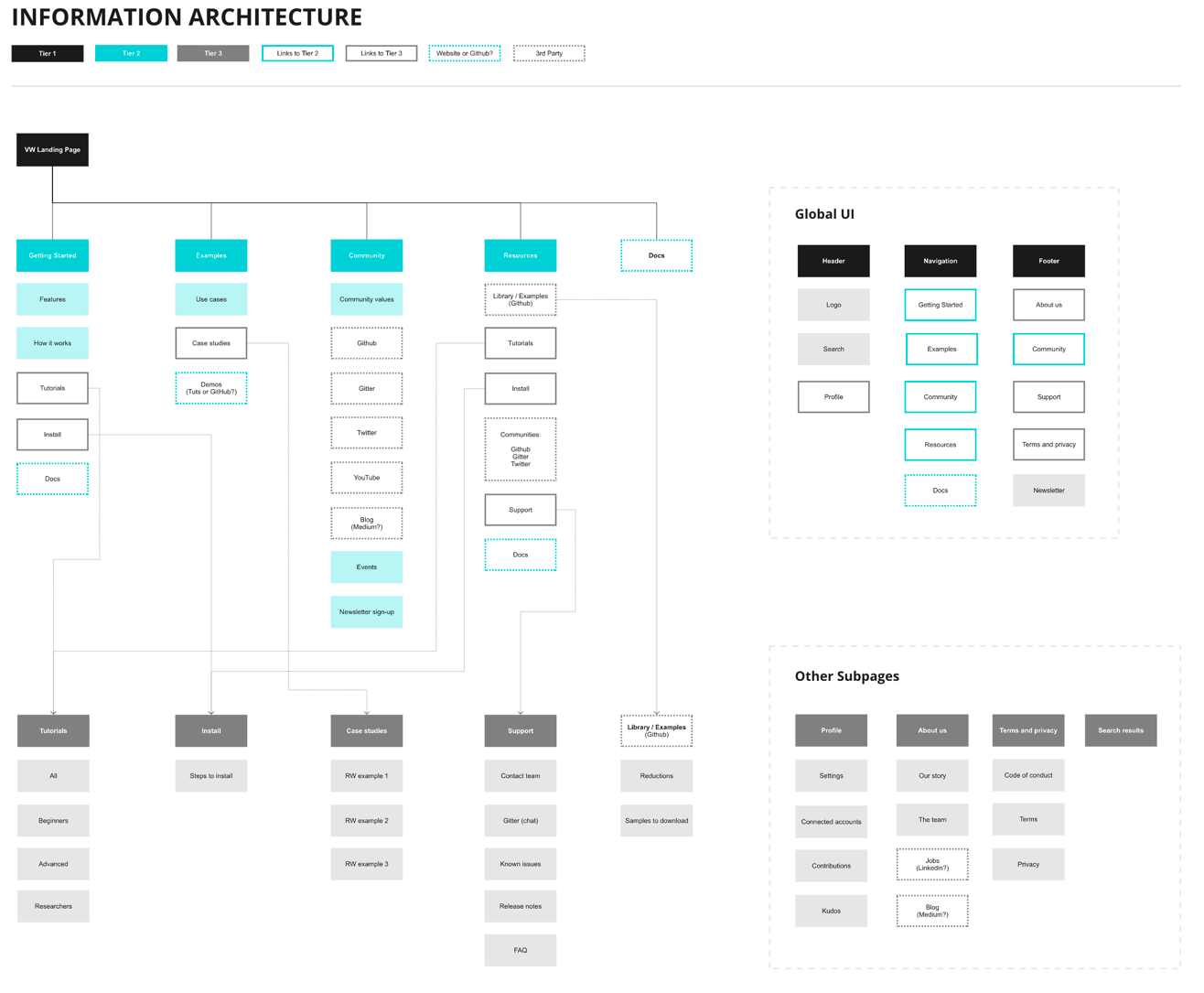
Low-fidelity wireframes
Once key points and pain points were uncovered form the research, the next phase was to go into the design studio, and begin drawing out low-fidelity wireframes.
Mid-fidelity wireframes
After refining the low-fidelity wireframes, mid-fidelity wireframes were designed in order to present the structure of the site to both the client and to the development team, so that potential issues and limitations could be brought up early on in the process.
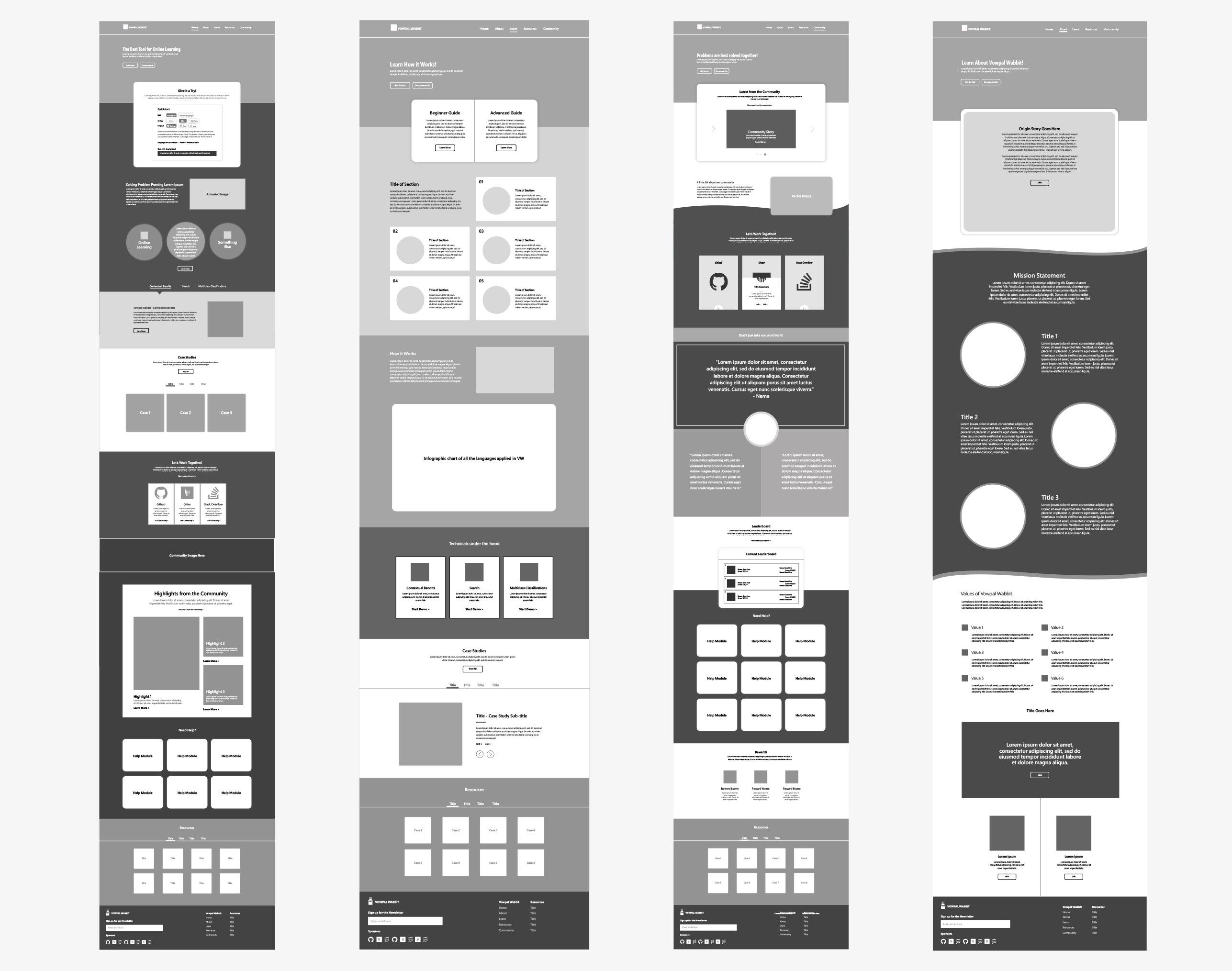
Hi-fidelity wireframes
After the mid-fidelity wireframes were approved by the stakeholders, we created hi-fidelity wireframes, along with visual design and brand elements. The brand story is based on a robot space rabbit, who lands onto Earth for the first time, and cognitively picks up and learns about his surroundings. It is a play off of VW’s online learning capabilities, and VW’s ability to create new logic through online exposure.
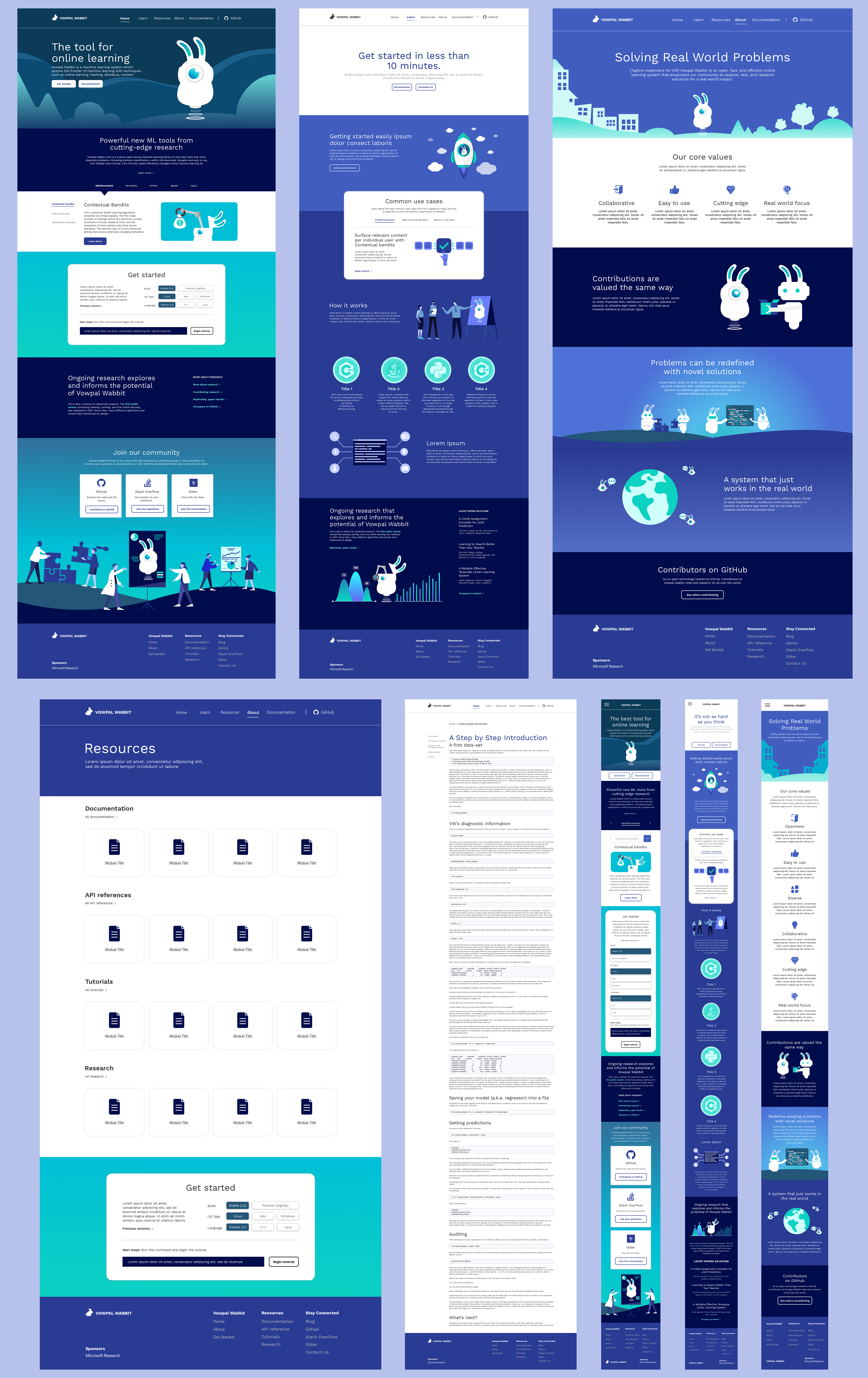
Next Steps/Future Opportunities
Immediate next steps, are to begin user studies, to determine the effectiveness of the current design, and how well it leads to the user launching a demo, and implementing VW to their existing project.
Next steps:
- Continue to QA test the site
- Continue to build new demos
- Add new documentation
- Continue to evolve the brand and design system
- Design the community page
